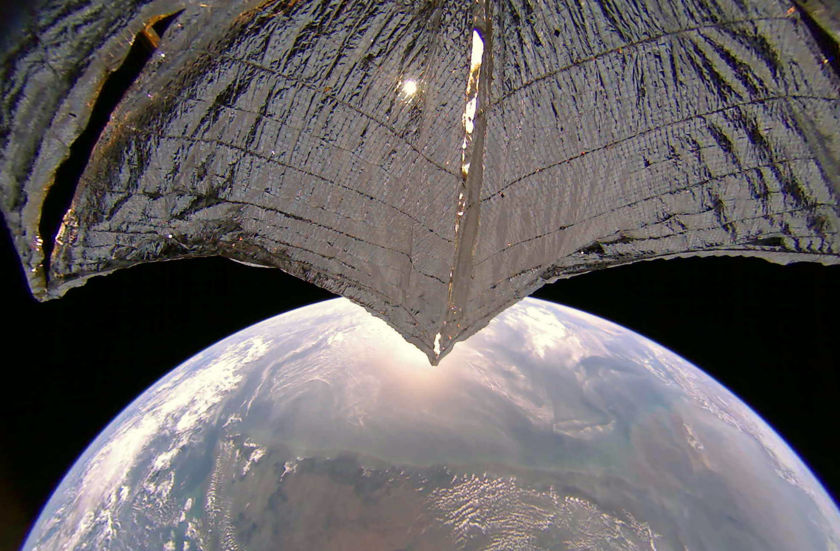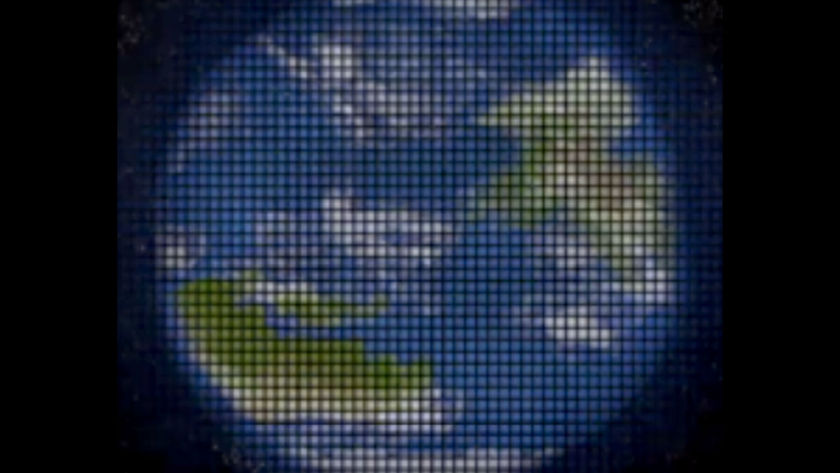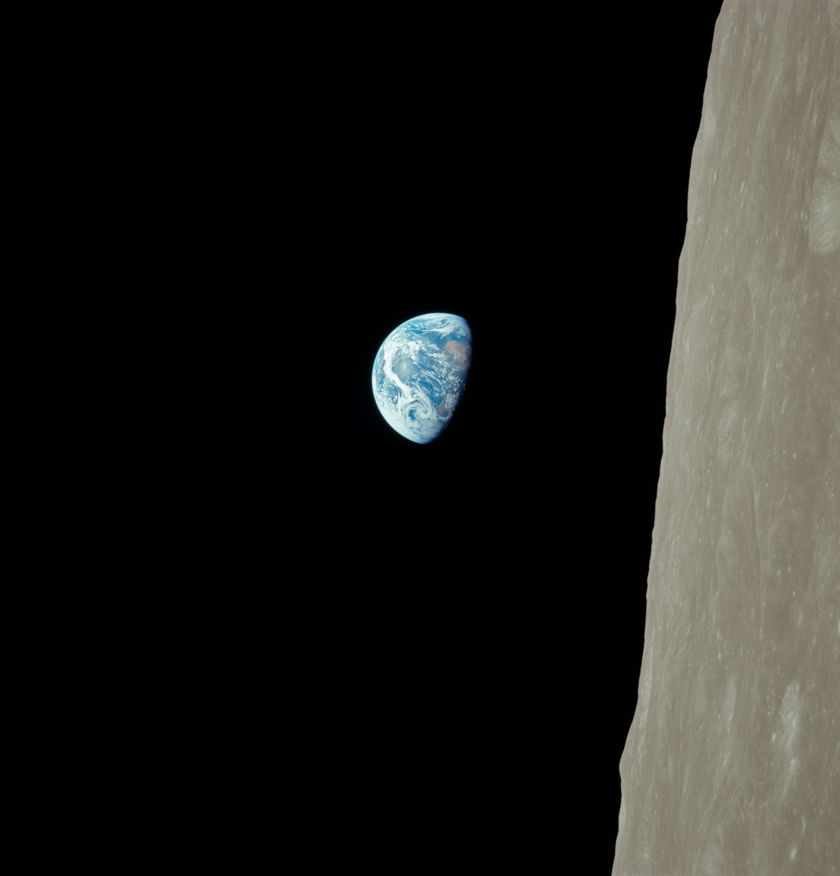25.05.2020

What if we could take a picture of an Earth-like planet around another star that was sharp enough to see continents, oceans, and clouds?
Right now, it’s impossible. From our vantage point, exoplanets—planets orbiting other stars—look like fireflies next to spotlights. In the few images we’ve managed to take of them, the exoplanets are mere dots. Even as the next generation of space telescopes comes online, this won’t change—you’d need a 90-kilometer-wide telescope to see surface features on a planet 100 light years away.
A group of researchers has an audacious plan to overcome these difficulties. It involves using solar sail spacecraft—possibly an entire fleet of them—to fly faster and farther away from Earth than any previous space probe, turn around, and use our distant Sun’s gravity as a giant magnifying glass. If it works, we’ll capture an image of an exoplanet so sharp that we can see features just 10 kilometers across.
The project, called the Solar Gravity Lens, or SGL, sounds like something straight out of science fiction. NASA and a collection of universities, aerospace companies and other organizations are involved, as well as Planetary Society co-founder Lou Friedman, the original solar sailing guru.
“I am always excited about trying to make something happen that cannot happen in any other way,” said Friedman, a consultant for the SGL project who led a 1970s NASA effort to send a solar sail spacecraft to Halley’s Comet. “The whole reason we started with solar sailing at The Planetary Society was because it allowed us to take first steps toward interstellar exploration. Our LightSailworked really well, and its success gives confidence and credibility to the idea of sailing through the solar system.”
The plan has many hurdles, but the payoff would be incredible, said Slava Turyshev, a physicist at NASA’s Jet Propulsion Laboratory who is spearheading the Solar Gravity Lens project.
“Within our solar neighborhood, which we classify as within 100 light-years, we have identified several exoplanets which may be in the habitable zone of their star,” said Turyshev, referring to the not-too-hot, not-too-cold region around a star in which liquid water could exist. “And so now we have the question, what would we do if we found something that indicates the presence of life on an exoplanet? Could we travel there, or at least see it?”
How it works
Albert Einstein predicted over a century ago the idea that gravity can bend and magnify light, a concept known as gravitational lensing. From an observer’s point of view, light from a distant object passing close to a massive foreground object gets distorted and magnified, providing the observer is in the right spot, known as the focal point. It’s similar to the way you can focus a camera by finding the right distance from your target, rather than adjusting the camera’s focus.
The Hubble Space Telescope and other observatories have seen this phenomenon: wispy arcs and rings of distant galaxies, distorted and magnified by the gravity of closer galaxies.
The researchers behind the SGL project say we can do the same thing for exoplanets—we just need to travel to the focal point. For an exoplanet 100 light years away, the focal point is 97 billion kilometers (60 billion miles) away—16 times further from the Sun than Pluto. Voyager 1, which has ventured further into space than any other human-made object, has only traveled about 20 billion kilometers (13 billion miles), and it took the spacecraft 40 years to get there.
The solution to getting there faster? Solar sailing.
Solar sails capture the momentum of light from the Sun and use that momentum as propulsion. Using this technology, an SGL spacecraft would fly close to the Sun, pick up speed and fling itself toward the outer reaches of our solar system, making the journey in just 25 years.

The Planetary Society
WEST COAST OF INDIA FROM LIGHTSAIL 2
This image taken by LightSail 2 on 21 January 2020 includes the west coast of India. North is at right. The sail appears slightly curved due to the spacecraft's 185-degree fisheye camera lens. The image has been color corrected and some of the distortion has been removed.Instead of the big, heavy spacecraft used in the past, the researchers envision small, resilient probes that could catch rocket rides to space with other missions to cut down on launch costs. One possibility is to use swarms of loaf-of-bread-sized CubeSats, similar to LightSail 2, that could self-assemble to create a larger, single optical system. If the spacecraft are cheap enough, missions could be sent to the focal points for multiple exoplanets.
At the focal region, the light from the exoplanet would be smeared into a circle known as an Einstein ring. The ring would contain 2 parts. One part would come from a single, 10-by-10-kilometer-portion of the exoplanet and yield just a single pixel in the final image. The other part would contain light from the rest of the exoplanet. As the spacecraft speeds through the focal region, it would need to move around using miniature ion thrusters—sunlight would be too weak for solar sailing at this distance—to change the portion of the exoplanet in focus.
With the right optics, taking 1 million pictures of the rings from different locations could yield a picture similar to the one taken from the Moon by the Apollo 8 astronauts in 1968, and capture surface features as small as 10 kilometers across.
Is it feasible?
The technological challenges for SGL are daunting, to say the least. For starters, there’s the matter of precise navigation, communications over long distances, and the need for a sunshade to keep our own Sun’s light from entering the telescope. A coronagraph would also be required to block the light from the exoplanet parent’s star.
NASA believes in the concept enough to have recently awarded it a $2 million grant from its NIAC (NASA Innovative Advanced Concepts) program. NIAC, which has been around since 1998, provides seed money to help innovative ideas get off the drawing board. SGL is just the third study in the history of the program to reach the project’s third phase.
The project’s success may be in its diverse team, a unique approach for NIAC projects. The cooperative effort includes several researchers from JPL and multiple universities, including UCLA, the University of Arizona, and Wesleyan University. Space companies The Aerospace Corporation and NXTRAC Inc. are involved, both of which specialize in mission design and technical analyses. This multi-organizational effort brings together the latest technology innovations, such as breakthrough technologies in solar sails, artificial intelligence, nano-satellites, and formation flying.
“A mission like SGL can lead to a transformation in how we explore space,” said Thomas Heinsheimer, the technical co-lead for the SGLF mission from the partnering Aerospace Corporation, “going from the large costly spacecraft that have served us well in the past, to swarms of small craft, working together, to make new discoveries far from Earth. SGL creates an exploration architecture for many space-faring organizations to work together towards answering an inspiring question: “Are We Alone in the Universe?”
Turyshev feels the current generation may be able to answer this question, with SGL serving as a ‘focal point’ to help transform the space industry into a more cooperative enterprise.
“SGL might provide that point for multiple technology efforts to really pull us forward to make that first step outside the solar system,” he said. “The needed technologies do already exist, but the challenge is how to make use of that technology, how to accelerate their development, and then how to best put them to use. I think we are at the beginning of an exciting period in the space industry, where getting to SGL would be practical, and scientifically exciting.”
Quelle: The Planetary Society


